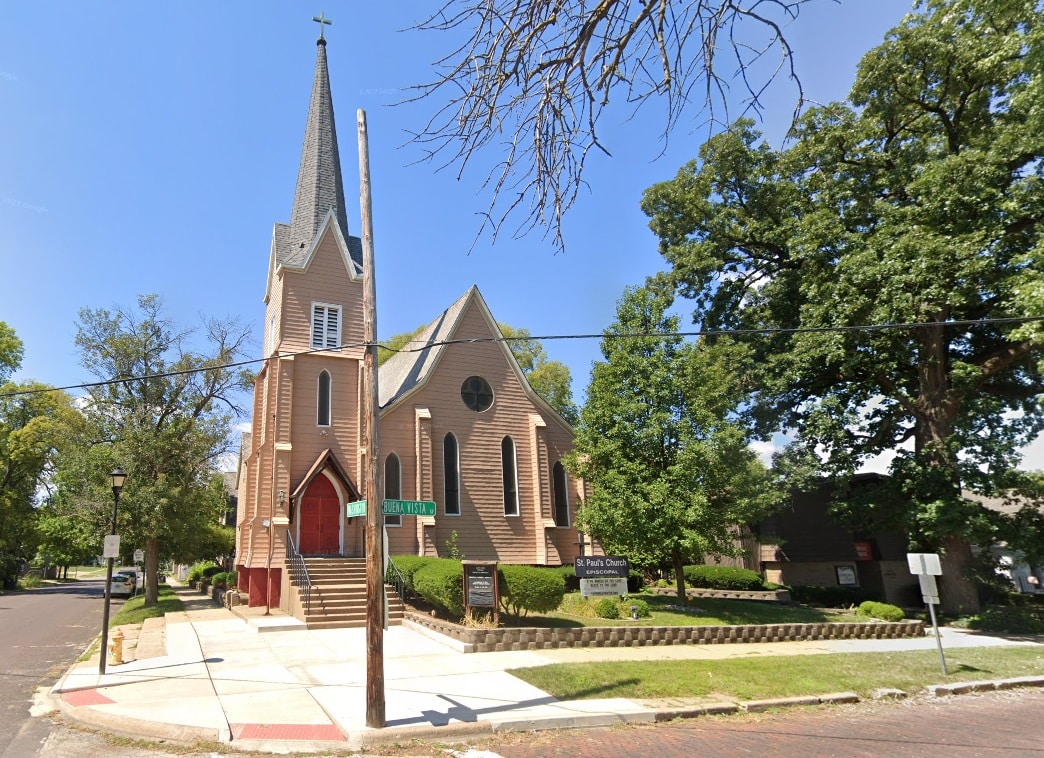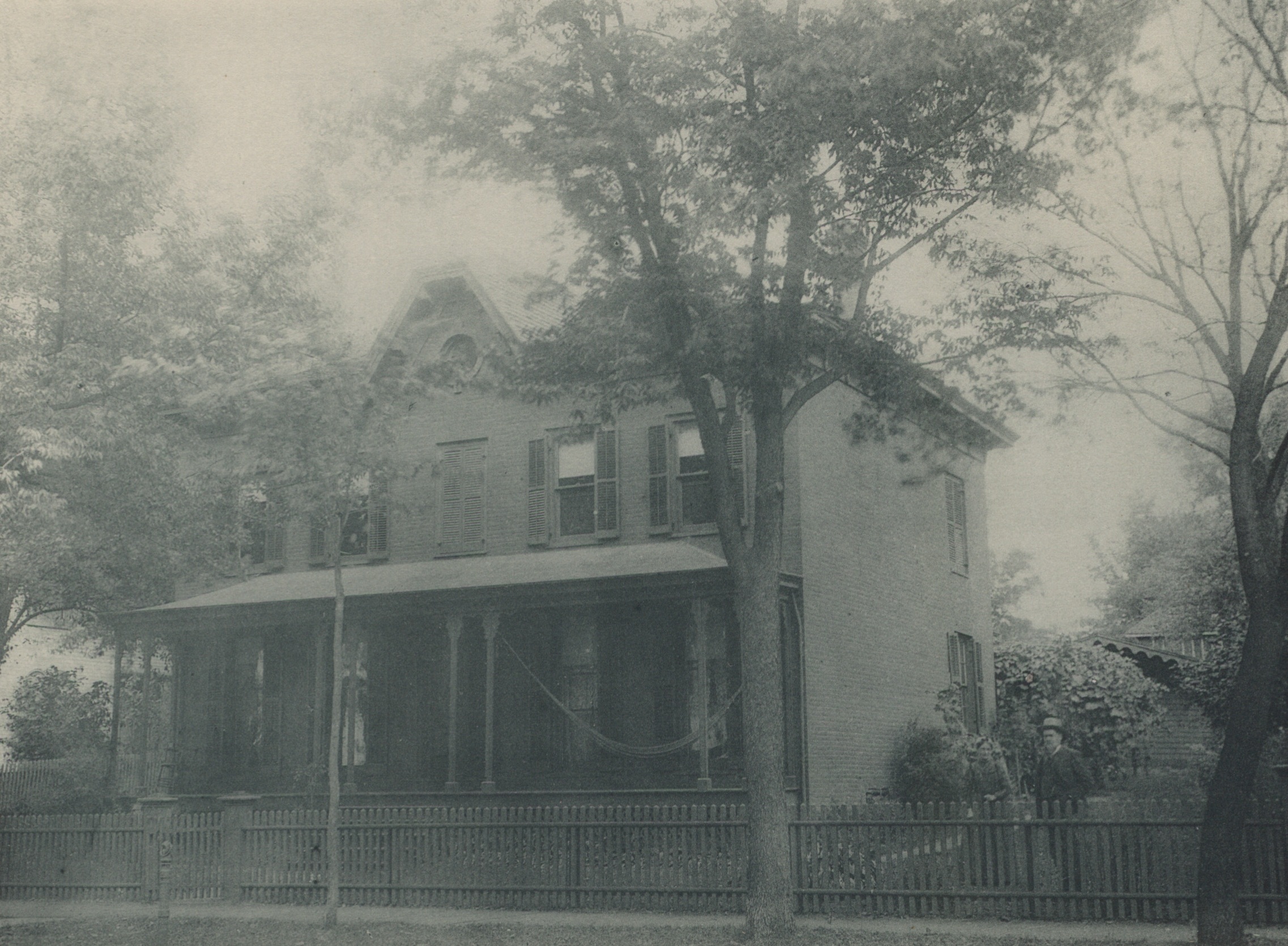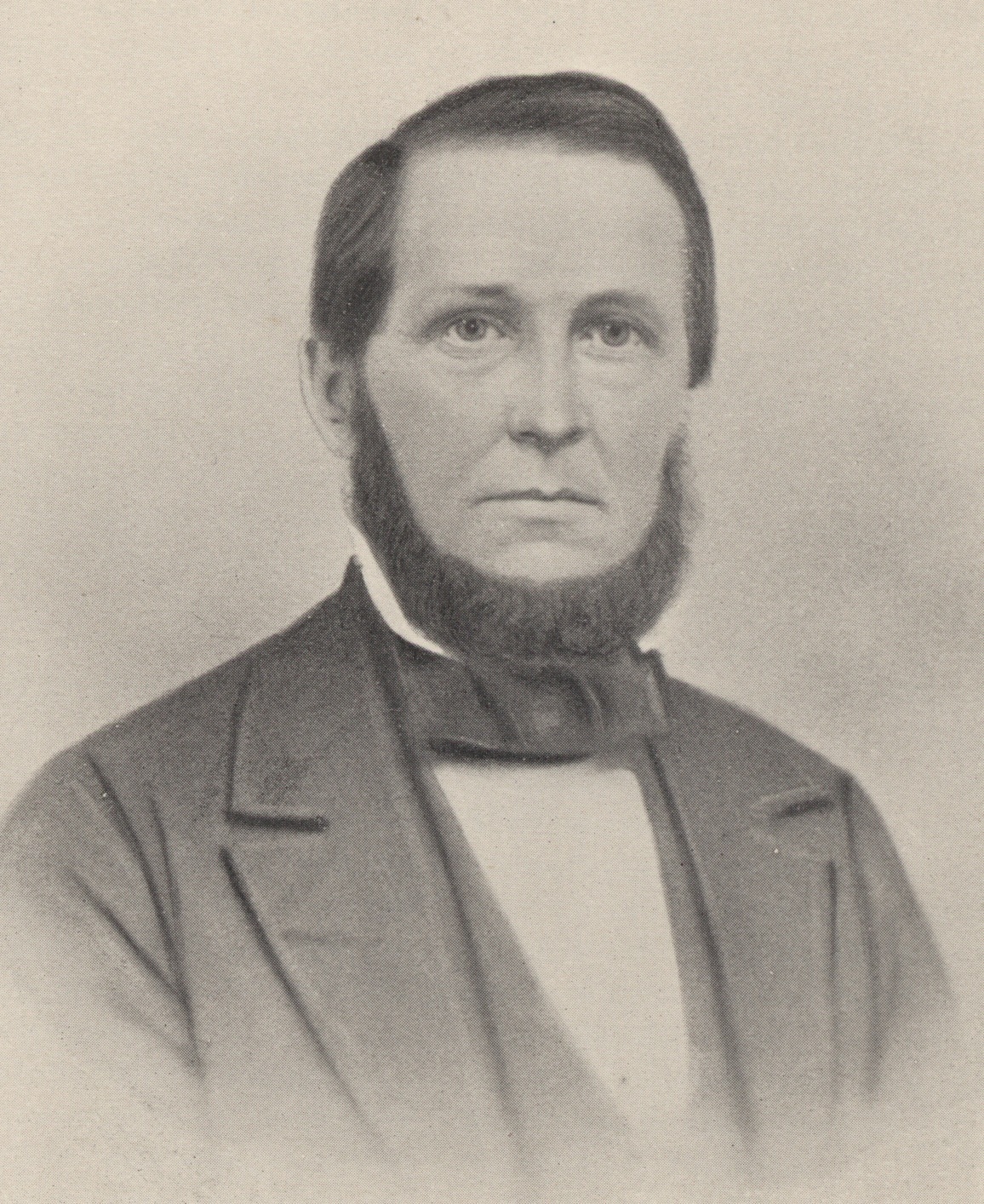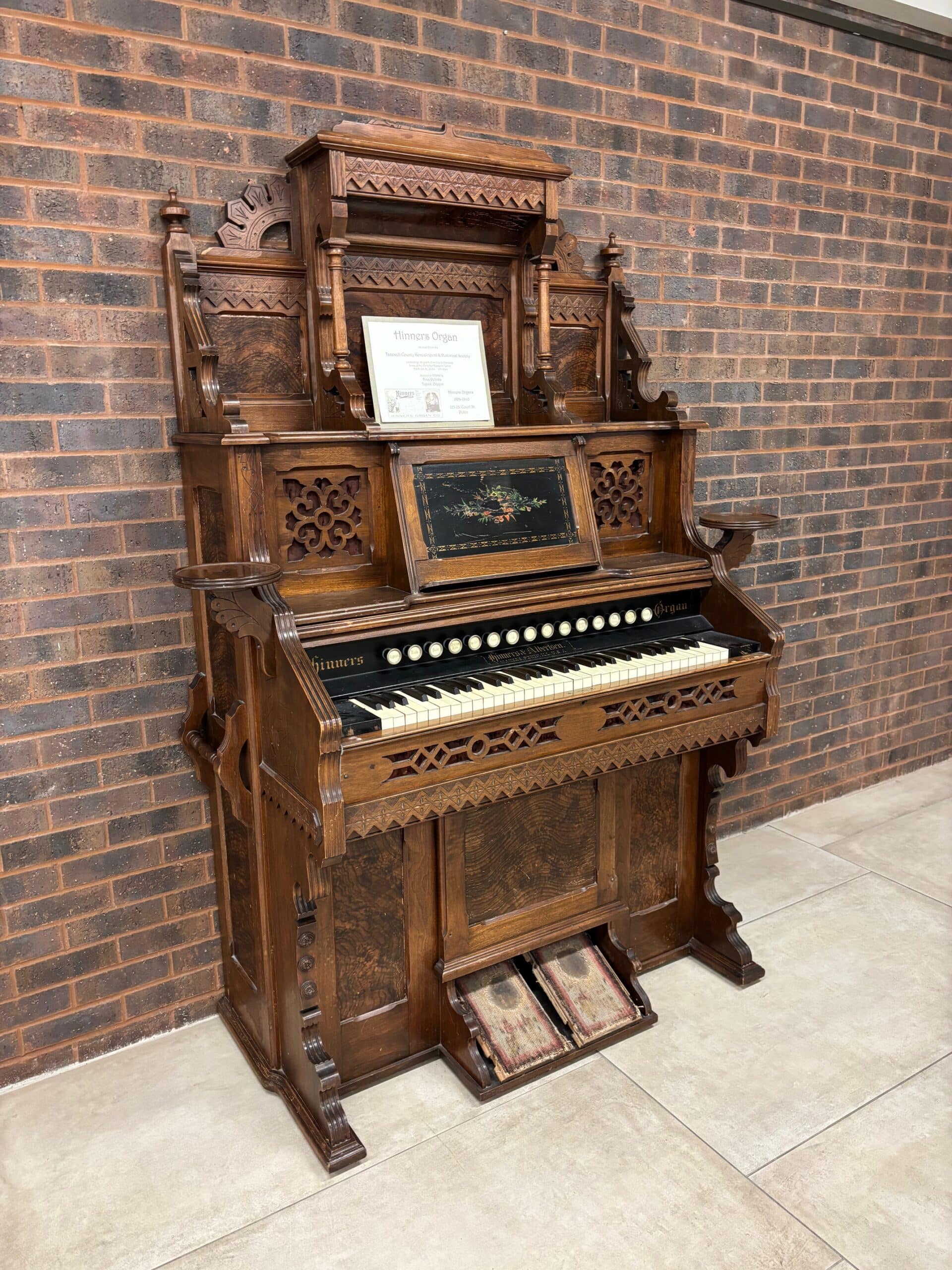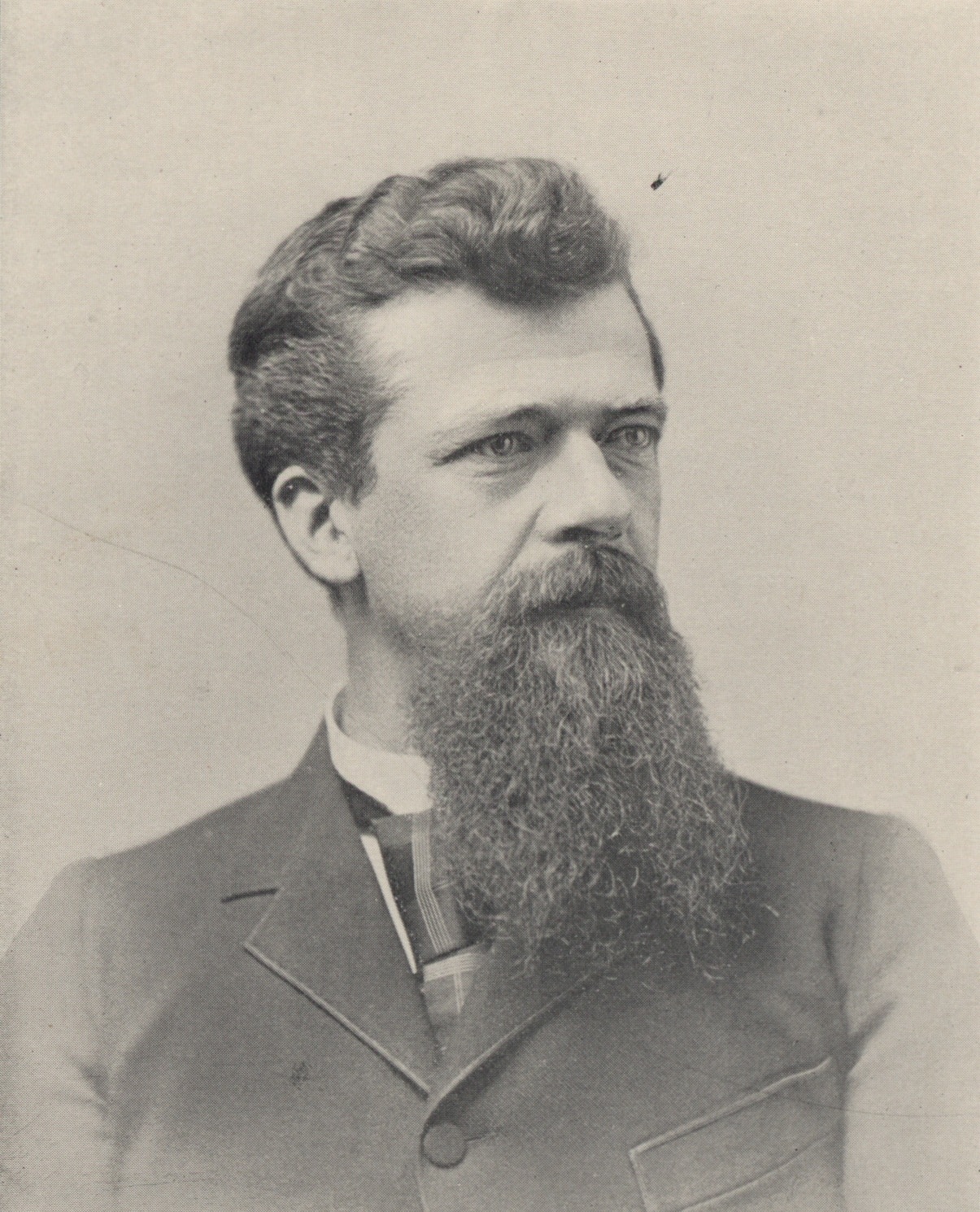Built 151 years ago, St. Paul’s Episcopal Church at the corner of Buena Vista and Washington streets holds the honor of being the oldest surviving church building in Pekin.
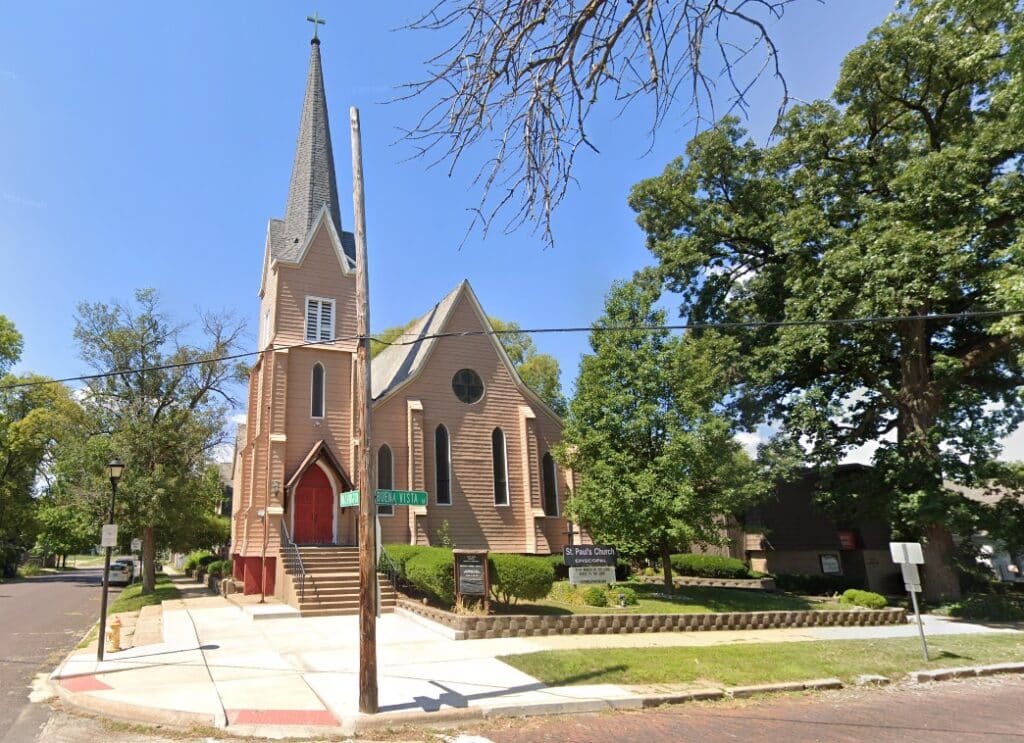
The church, built in Victorian Neo-Gothic style, serves a parish whose origin reaches back to 19 Nov. 1837, not even eight years after the platting and naming of Pekin, when the Rev. William Douglas, an Episcopalian missionary priest, served as rector of Christ Church Parish in Tremont and traveled between Tremont and Pekin to minister to three communicants.
In 1850, about the same time that the county seat was moved from Tremont back to Pekin, the Episcopal parish in Tremont relocated to Pekin, and in June 1851 the parish was formally admitted to the convention of the Episcopal Diocese of Illinois. In those early days, Pekin’s Episcopalians gathered for worship at various locations, but by 1861 their house of worship was a small schoolhouse on the south side of Elizabeth Street, at the site now occupied by the Marshall Building. Later the schoolhouse/church was moved to the southwest corner of Broadway and Buena Vista, and that served as St. Paul’s Church until the consecration of the present St. Paul’s.
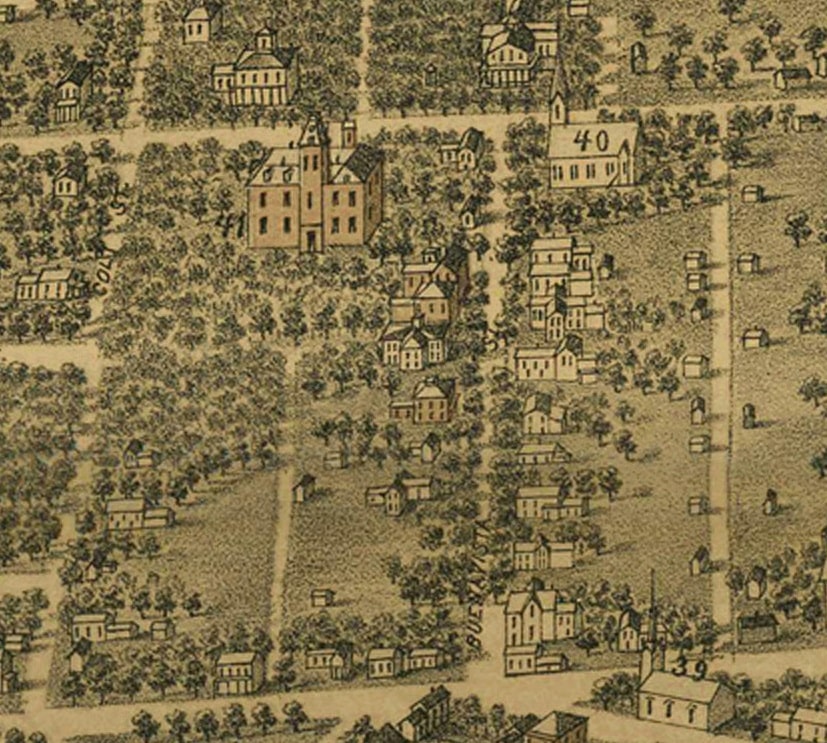
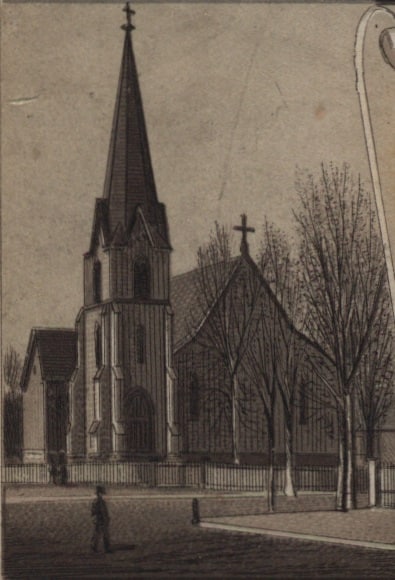
Preparations for the construction of a new church at the opposite end of Buena Vista began in 1870 with the purchase of the lot for $1,200 and the laying of the church’s foundation. It took four more years before the congregation could erect the church at a cost of $6,500, and then another two years before the debt could be paid off so the church could be consecrated. The whole cost was raised through the members’ donations, except for $1,000 that came from the sale of the old church and lot at the corner of Broadway and Buena Vista. The formal consecration of the church took place on 22 March 1876. At the time, St. Paul’s had 44 communicants.
In the latter 1800s, St. Paul’s Episcopal Church had a parochial school, known as the Cathedral School, on South Capitol Street. The school, which operated out of the former home of Reuben Bergstresser and the Cohrs family, was located at the present site of Jefferson School. The Cathedral School was established by the Rev. George West, who became parish rector in 1882.
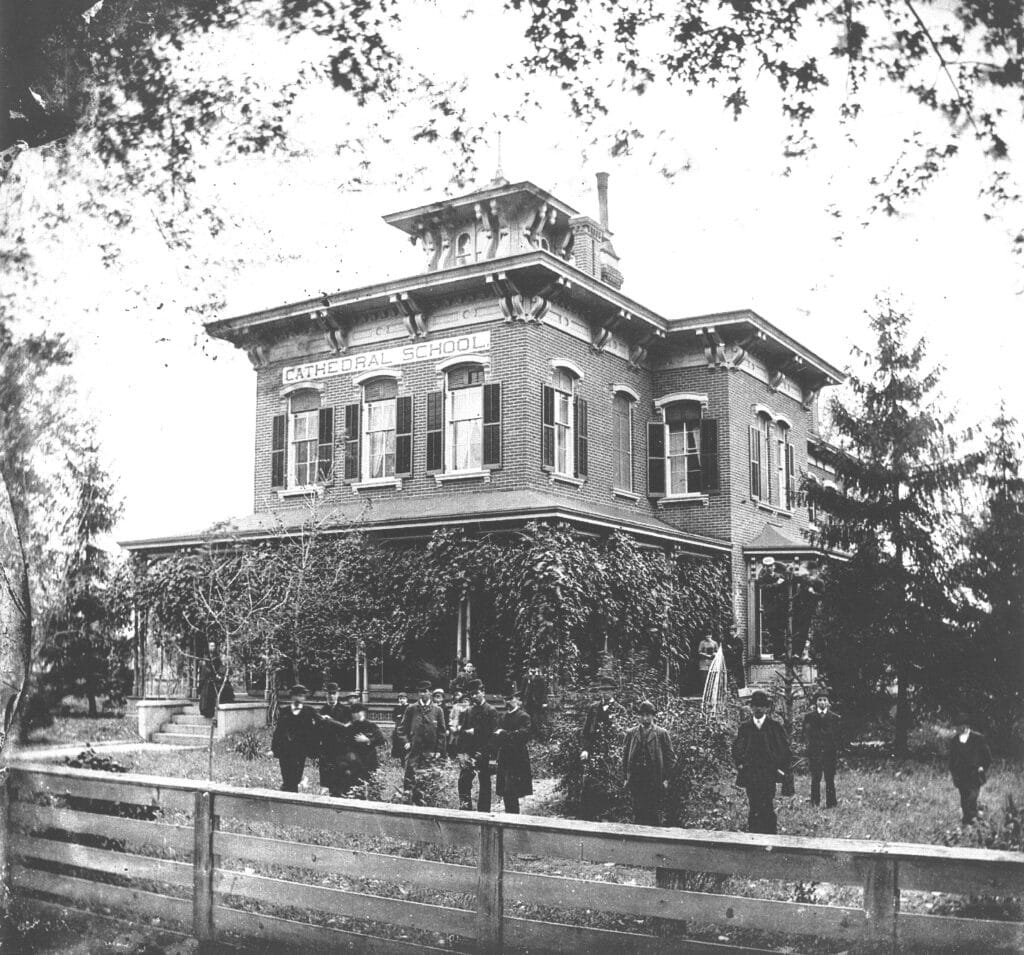
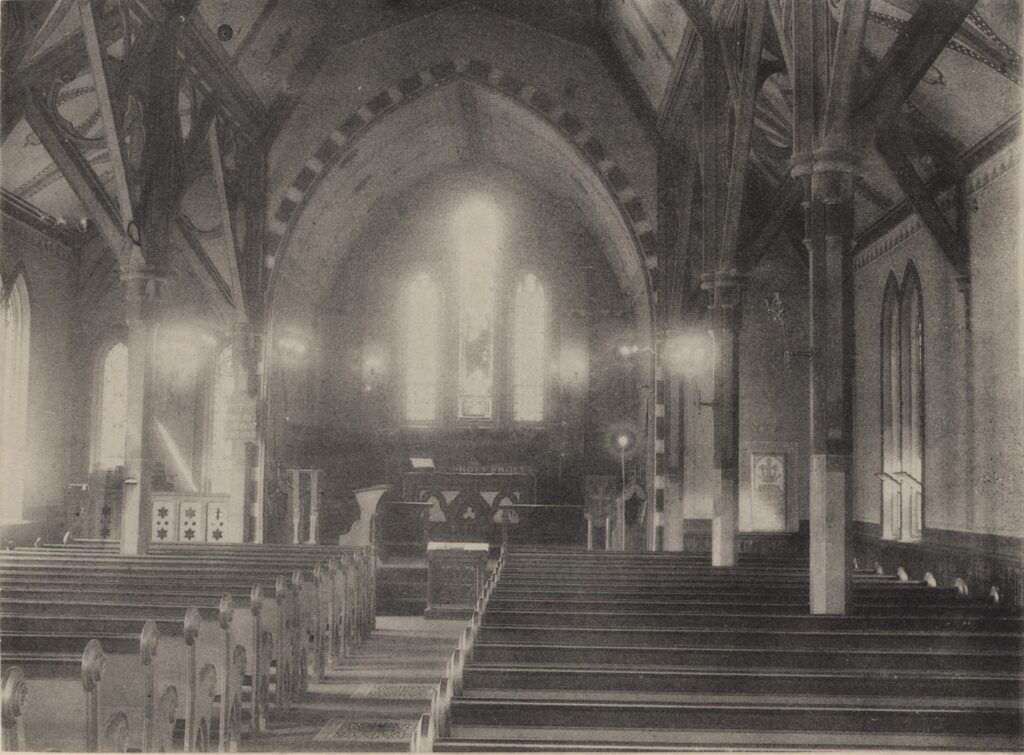
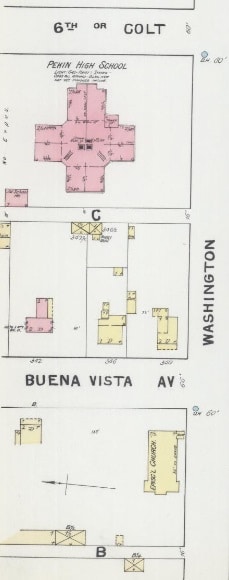
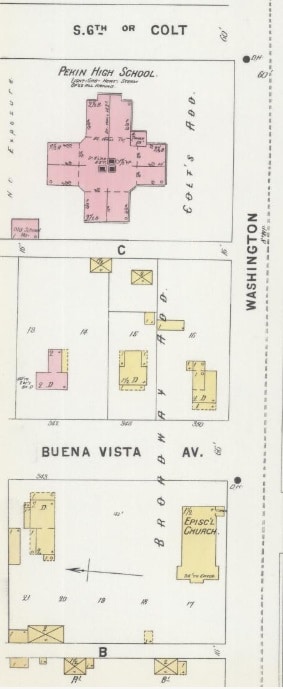
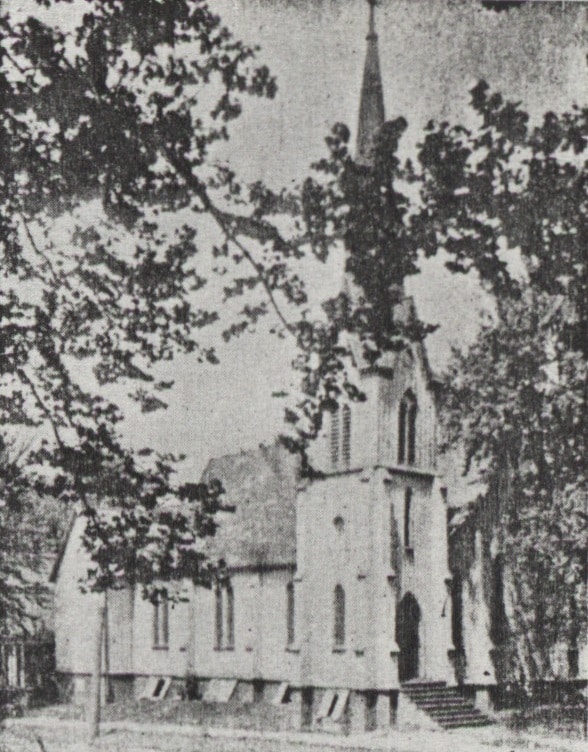
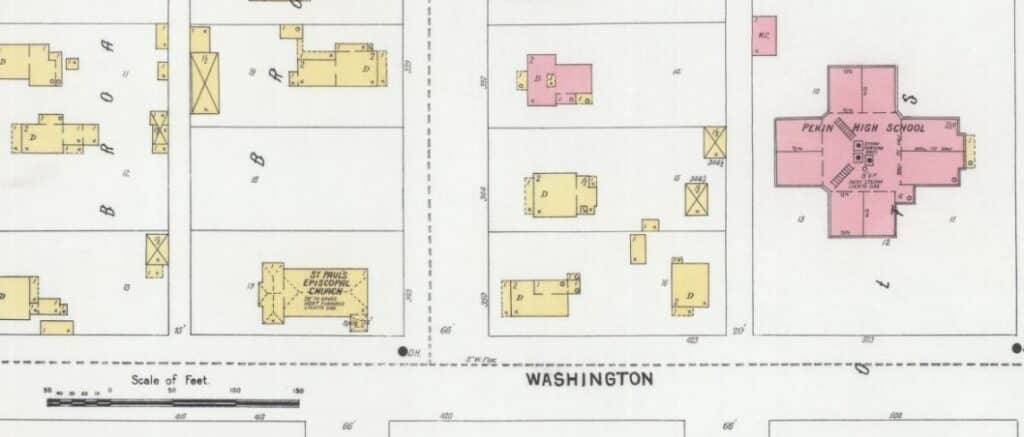
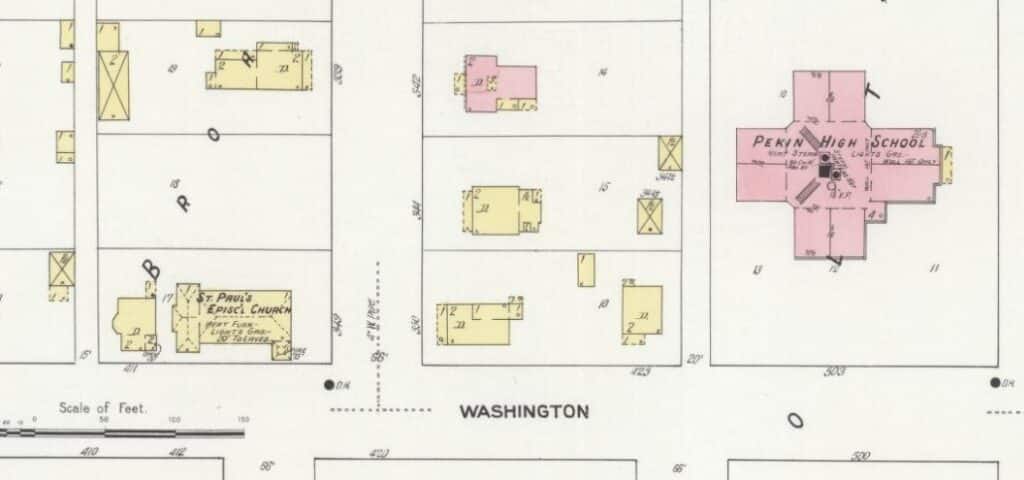
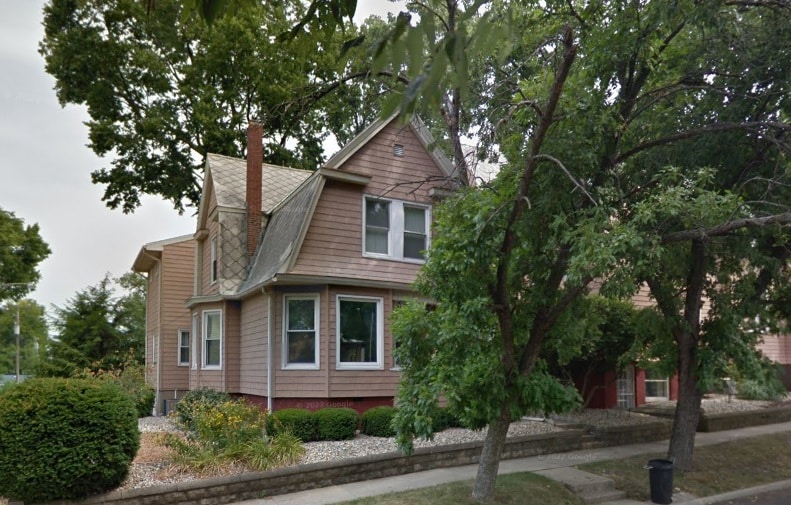
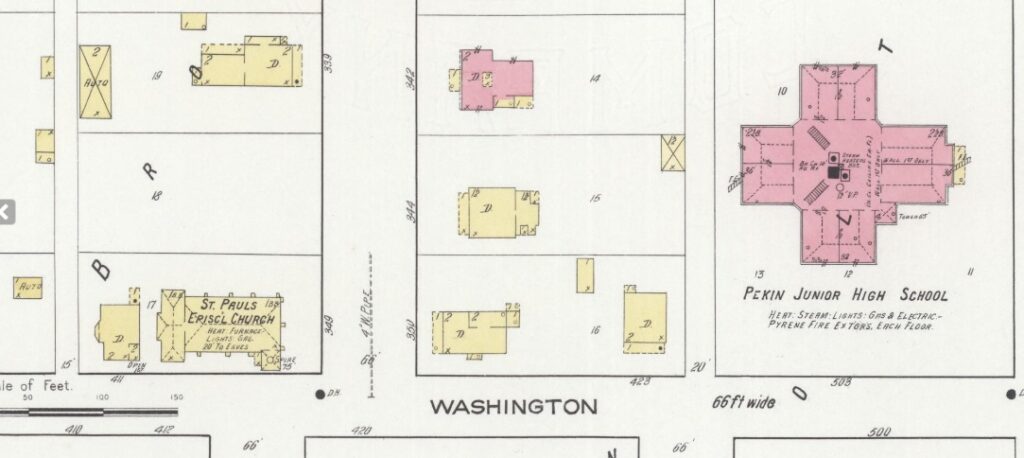
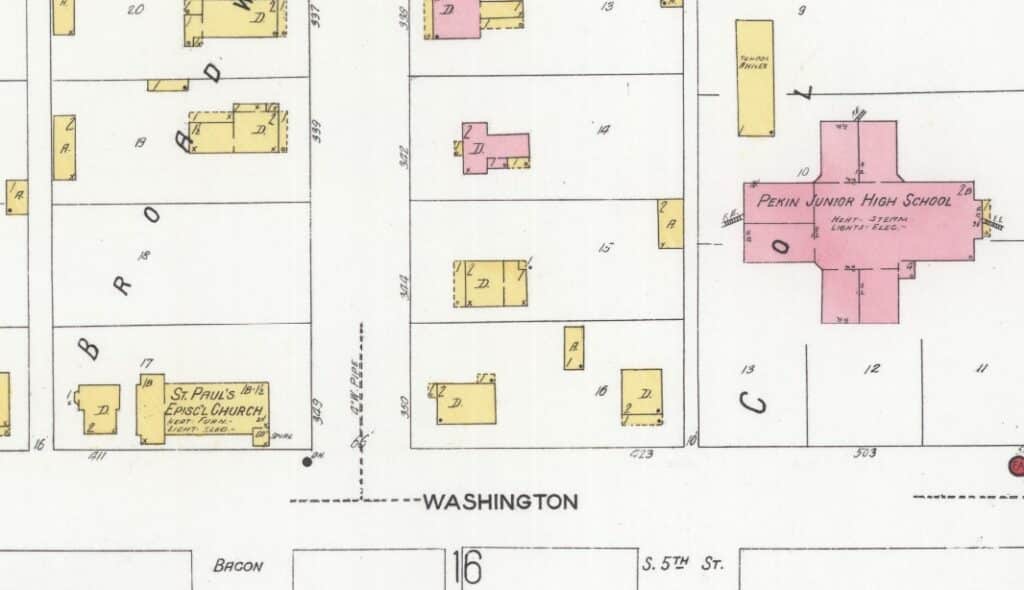
During the years from 1903 to 1909, the church’s undercroft was excavated and a steam boiler and electricity were installed in the church, while a rectory to provide a residence for the parish rector and his family also was built on the west side of the church. In 1947, a legacy from the late parishioner Anna Blenkiron (who had also arranged for the creation of Blenkiron Park, the “tot lot” at the corner of Park Ave. and Sixth Street) enabled the parish to do an extensive remodel and improvement of the church’s interior.
In 1962, St. Paul’s built a two-story, 14-classroom education building on the lot adjacent to the church on the north side. The building bears the Latin name “Spiritus Gladius,” which means “Sword of the Spirit,” a reference to the Word of God which the Bible likens to a two-edged sword. The building was a preschool learning center in the early 1970s. In 1986, two of the classrooms were set aside to become the All Souls memorial chapel and columbarium. During the week, daily services take place in All Souls Chapel. About two years after the creation of the chapel, memorial gardens were added to the church property. The exteriors of the church and rectory underwent a remodel, refurbishing, and repainting in 1996.
The most recent visible change to St. Paul’s campus was the demolition of the old rectory just a few years ago.
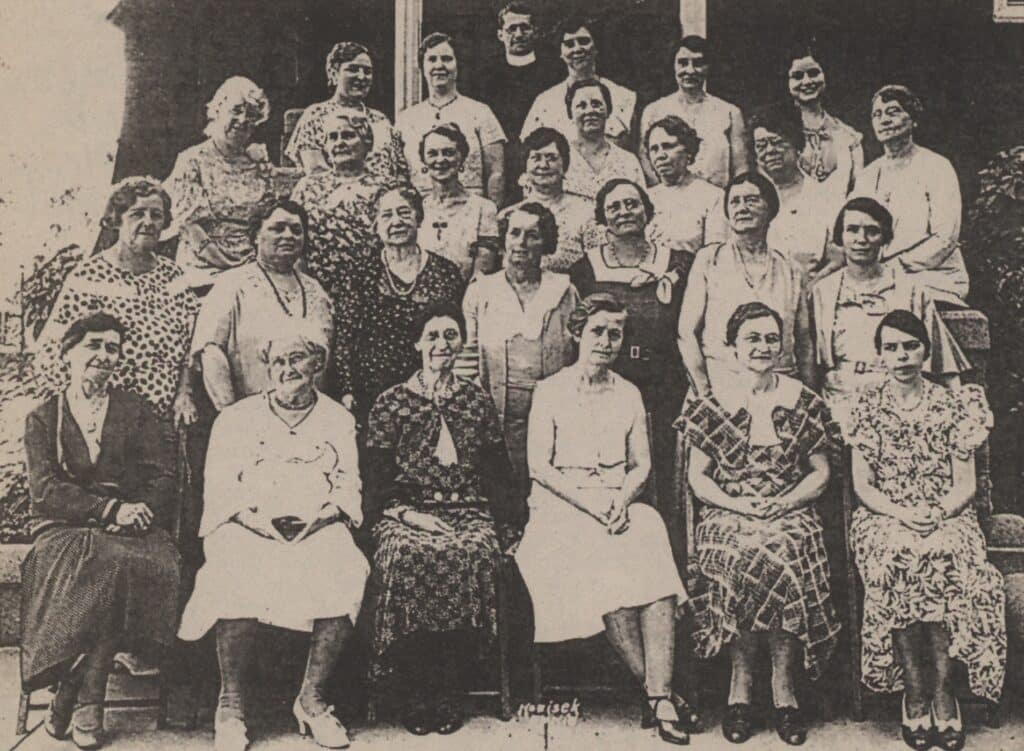
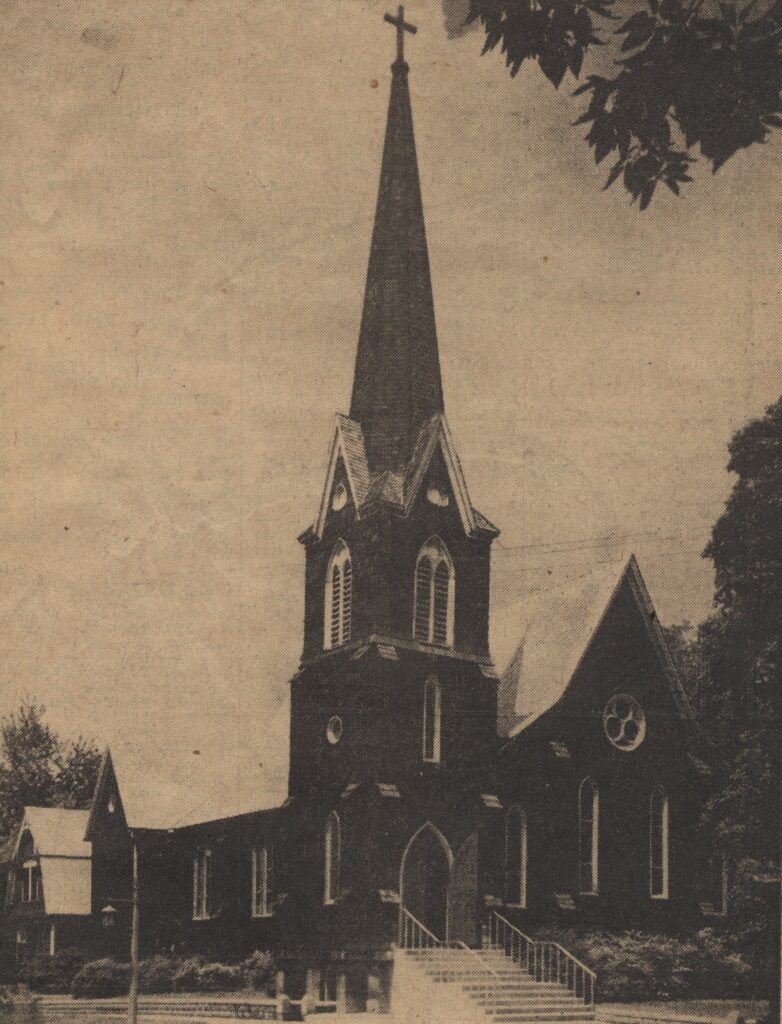
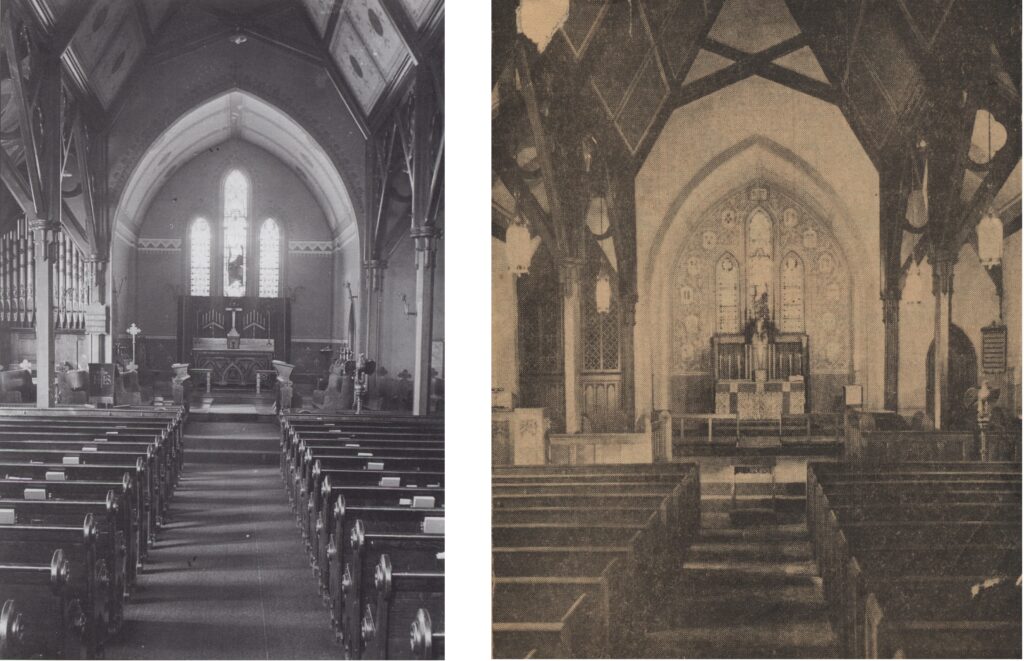
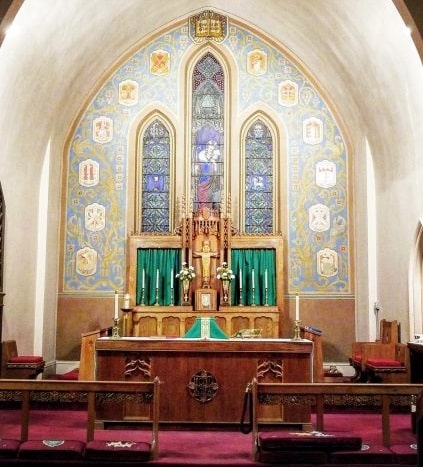
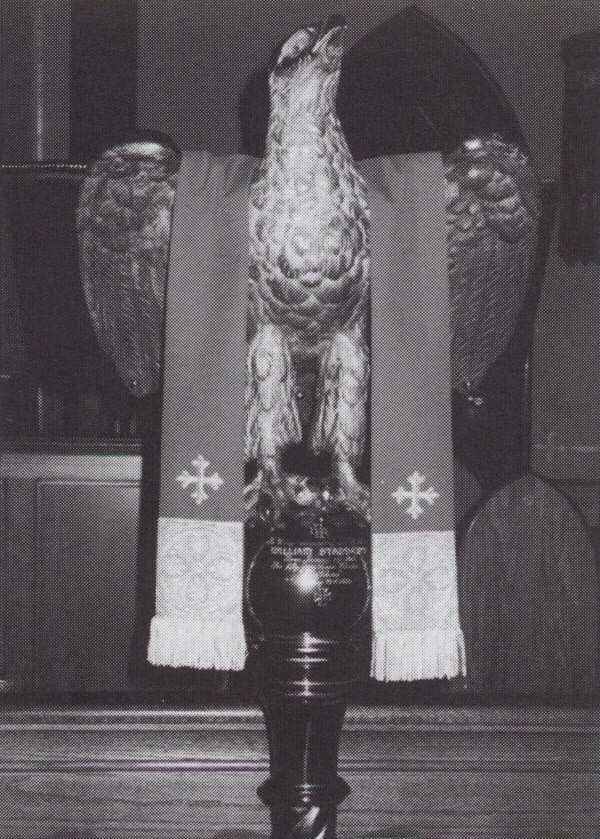
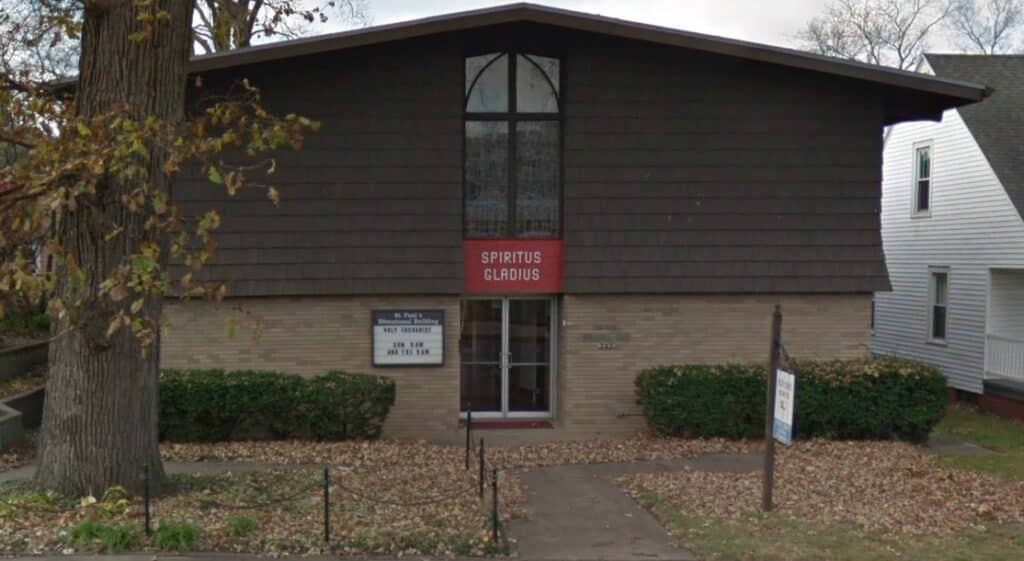
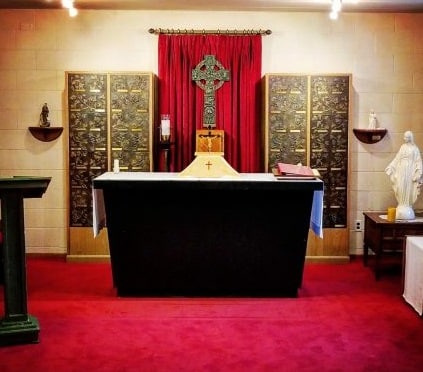
Today the church, a part of the wider Anglican Communion, is a part of the Episcopal Diocese of Springfield, which was formed in 1877 from the tripartite division of the old Diocese of Illinois. The congregation is served by the Rev. Jonathan M. Butcher, who is also the pastor of the All Saints Episcopal Church in Morton. St. Paul’s current vestry members are Jacob Brisbin, senior warden, Ann Bacon, junior warden, Pam Breeland, Michael Copelen, and Sharon Robinson. The parish’s oldest communicant is Harriet Harris, age 104, who is also the past long-time parish treasurer.
Following are a series of historical notices of St. Paul’s Episcopal Church from the Pekin Public Library’s Local History Room collection. To begin with, St. Paul’s received the following entry in Omi Root’s 1861 City Directory of Pekin:
“Organized in the Spring of 1850, by the Rev. J. S. Chamberlaine, Missionary. He was succeeded by the Rev. Lloyd Johnson. The Rev. G. Sayres took charge of the Parish during the fall of 1854, and remained as Pastor until in 1859. In February, 1861, the present Pastor was called. House of worship situated on the south side of Elizabeth street, between Capitol and Fourth. Rev. C. F. Loop, Pastor. Hours of service, 10 1/2 A.M. and 3 1/2 P.M. Number of communicants, 30. Regular attendance, 50. Sunday School meets 9 1/2 A.M.; G. H. Harlow, Superintendent. Number of teachers, 7; scholars, 35. Number of volumes in Sunday-School Library, 150.”
Charles C. Chapman’s 1879 “History of Tazewell County, Illinois,” page 593, devotes two paragraphs to St. Paul’s:
“St. Paul’s Episcopal Church was organized in the Spring of 1850, by Rev. J. S. Chamberlaine. He was succeeded by Rev. Lloyd Johnson. Rev. G. Sayres took charge of the Parish during the fall of 1854, and remained pastor until 1859. In Feb. 1861, Rev. C. F. Loop was called and remained till 1863, when Rev. S. M. Steele succeeded him and he in turn was superceded by Rev. A. B. Russell, then by Rev. Hyde and then by Rev. T. N. Morrison.
“A new church edifice was erected in 1874, on Buena Vista Ave. and Washington St. The foundation was laid in the fall of 1870, but as the society was unable to complete the church it was left thus until the spring of 1874. The structure consists of two stories proper, a brick basement and main auditorium. The building is of Gothic style of architecture and about 35 by 85 feet in size. It is neat and tasty and elegantly furnished.”
In Ben C. Allensworth’s updated 1905 “History of Tazewell County,” page 921, St. Paul’s was given a single paragraph, most of which repeats the information from the 1879 history:
“St. Paul’s Episcopal Church was organized by Rev. J. S. Chamberlain in the spring of 1850. Among the rectors succeeding him have been Revs. Lloyd Johnson, G. Sayres, C. Look (sic), S. M. Steel, A. B. Russell, Hyde, and T. N. Morrison. The latter was in charge of the church about 1872-73, and has since become an Episcopal Bishop. The present church edifice was completed in 1874, at the corner of Buena Vista and Washington Streets. The building is of Gothic style of architecture, in dimensions about 35 by 85 feet. It is neat, tasteful and elegantly furnished. It has sixty communicants and two Guilds — the ‘Women’s Guild’ and ‘St. Mary’s Guild,’–the latter having a membership of twenty. Rev. A. A. Benton is now the priest in charge.”
The Peoria Star newspaper, in its Monday, 23 March 1936 edition, published a long article about St. Paul’s Parish celebration of the 60th anniversary of the consecration of their church. Here follows a transcription of that article, which includes an extensive parish history for the period from 1837 to 1936:
DEDICATION OF CHURCH IN 1876 IS CELEBRATED
Special Service Is Held Sunday at St. Paul’s
Pekin, March 23.–Yesterday was a day of rejoicing and reminiscence, of hospitality and history, of sermon and song in St. Paul’s Episcopal church, for it was the 60th anniversary of the then new church. The congregation heard the history of the church from its founding in 1837, nearly a century ago.
Choral Eucharist was sung at 10:25 Sunday morning before a congregation that filled the church. Previous to that Bishop John Chandler White of Springfield conducted the early service and communion at 7:30, at which there were many communicants. The anniversary sermon at 10:45 was preached by the Rev. Howard Adams Le Pere, of St. James church, Hibbing, Minn, former Pekin rector, who credited the late Jesse Black with the new life in the church that started some years ago and recalled some of his experiences in Pekin. In the congregation were many former members who came for the celebration.
Attend Celebration
C. B. Smith, managing editor of The Peoria Star, whose father, R. D. Smith, was one of the building committee of 60 years ago; Mr. and Mrs. T. B. Smith and Mrs. Emma Lowrey of Peoria, the Wright sisters from Petersburg, Edwin Cheeseman, Argo, Ill., son of a former rector, and many others.
At 1 o’clock dinner was served to 130 in the guild hall of the church. There followed a program that included vocal solos by Mrs. William Trimpl and Mrs. Emma Loomis Crumbacker, accompanied by her daughter, Mrs. Robert Carroll, piano solo by Mrs. A. B. Shacklette, duet by John Loomis and Oscar Winkel, and history of the church read by the rector, the Rev. Frederick S. Arvedson. Father Arvedson introduced Miss Anna Blenkiron and T. B. Smith, whose fathers, William Blenkiron and R. D. Smith, were vestrymen in 1876; Mrs. C. F. Gehrig, oldest confirmed member, and spoke of Mrs. Belle Bailey, whose father, Dr. McCoy, was one of the founders of the church. Mrs. Bailey was at the morning service, but has been ill and was unable to attend in the afternoon. She is oldest communicant in the church. Floral tokens of long service were presented to these members. Letters and telegrams were received from the Misses Myra and Gussie Sawyer, Salt Lake City; Frank C. Amsbary and Miss Cordelia Amsbary, Champaign; Mrs. Ella Stanbery Barber, Cincinnati, Ohio; the Rev. Arthur G. Musson, Cooperstown, N. Y., and the Rev. William N. Wyckoff, Des Moines, Iowa, former rectors; Mrs. Adrienne McDonald, Hamilton, Ohio; Caesar A. Roberts, Los Angeles, Cal., and many others. A letter from Dr. F. T. Mayer-Oakes of the Congregational church was read in which he congratulated the Episcopal church on its anniversary and hoped for its continued success.
“Romance of St. Paul’s”
The committee assisting Father Arvedson in preparing “The Romance of St. Paul’s Episcopal Church,” Mrs. W. E. Schurman, Miss Anna Blenkiron and Mrs. W. G. Fair, encountered many difficulties, as there were years in which no records were kept. The first authentic mention of the church was found in the report of the Rev. William Douglas made to the diocesan convention in Rushville, June 4 and 5, 1838, in which he stated he commenced ministering to the spiritual needs of Christ church, Tremont, in conjunction with Pekin, on November 19, 1837. At that time there were three communicants which later was reduced to two. Mr. Douglas continued to serve Tremont and Pekin until October 24, 1842, when Pekin was deprived of the room where services had been held and there was no other convenient place. There was a gap of nine years, 1842 until 1851, when no mention is made of Pekin in diocesan journals, but there was a church here during those years, for in June, 1851, St. Paul’s was formally admitted to the diocesan convention, William Stanbery attending as lay delegate. The Rev. J. J. Johnson was in charge at that time. In September, 1851, a special convention met in Pekin and elected the Rev. Henry J. Whitehouse of New York as assistant to Bishop Philander Chase, diocesan since 1835 and founder of Jubilee College, near Peoria. The convention met again in Pekin in 1852, Bishop Whitehouse presiding. Pekin was represented by four delegates, J. A. Jones, William Stanbery, Dr. William Cromwell and Matthews Moore, the latter a grand-uncle of the Fair brothers of this city and Mrs. Jennie Bush, who attended the Episcopal Sunday school in 1863. The church was then located in a building that stood on the site of the Marshall building, south of the court house. It later was moved to Buena Vista and Broadway and used until the new church was occupied in 1876.
Lot Purchased in 1870
Down through the years the records show the priests of the local Episcopal church were the Revs. George Sayres, 1854; Charles Loop, 1861; W. M. Steele, 1863; A. B. Russell, 1864, who served a year but lived in Pekin a long time after and died here; M. A. Hyde, 1867; T. N. Morrison, 1873. The latter afterward became bishop of Iowa, the only bishop to come from the Pekin church. He died from an automobile accident in 1929.
The lot for the site of the church was purchased in 1870 for $1,200, and the foundation laid, but it was four years later before the church was built, and two years after that before it was consecrated, as it had to be free of debt before consecration. The church cost $6,500, the congregation raising all but $1,000 realized from the sale of the old church and lot. The Rev. George West became rector in 1882 and started the cathedral school in the old Cohrs home on the site of the present Jefferson school. The cathedral flourished for many years and attracted students from distant points. Dr. Mulholland was rector during some years of the cathedral school, and was followed by W. W. Blatchford, William Hart, A. T. Young and S. A. Potter, about whom the records contain little. A. G. Musson was here from 1899 to 1902 and was succeeded by William Wyckhoff and A. A. Benton. William D. McLean served from 1904 until 1908; Dr. Andrew Gray, 1908 to 1912; T. W. Cheeseman came in 1913, H. A. Le Pere in 1919, George Clark in 1924, F. S. Arvedson in 1930.
Women Do Their Part.
The women’s organizations were given credit for much of the advancement by the church. Mrs. F. N. Albertsen was given credit for planning and supervision of the celebration and her mother, Mrs. Charles Wilson, of Peoria, was shown appreciation for recent remodeling of the church basement. The letter received from Mrs. Ella Stanberry Barger (sic) contained a gift of $500, and the announcement evoked a round of applause. The cordial relations existing between the church and Pekin members of the Greek Orthodox church were mentioned, the church having been given to their use for services on several occasions, and they have responded by supporting the church in its work.
Father Arvedson closed his historical recital with reference to the fact that the sacraments of the church have been administered for nearly a century, evidence of the vitality of the parish during these years, that in spite of many discouragements, slow increase and ever present financial problems a group of devoted churchmen and women have carried on, which tells more than words can express. After hearing the church history it cannot longer be said that the parish is not growing, when it is recalled there were only three communicants in 1837 and but 44 when the church was consecrated, compared with 106 today.
The story of St. Paul’s Episcopal Church is also summarized and updated in “Pekin: A Pictorial History” (1998, 2002), page 180, as well as in a Pekin Daily Times article published on Saturday, 17 July 2010, page C4.


